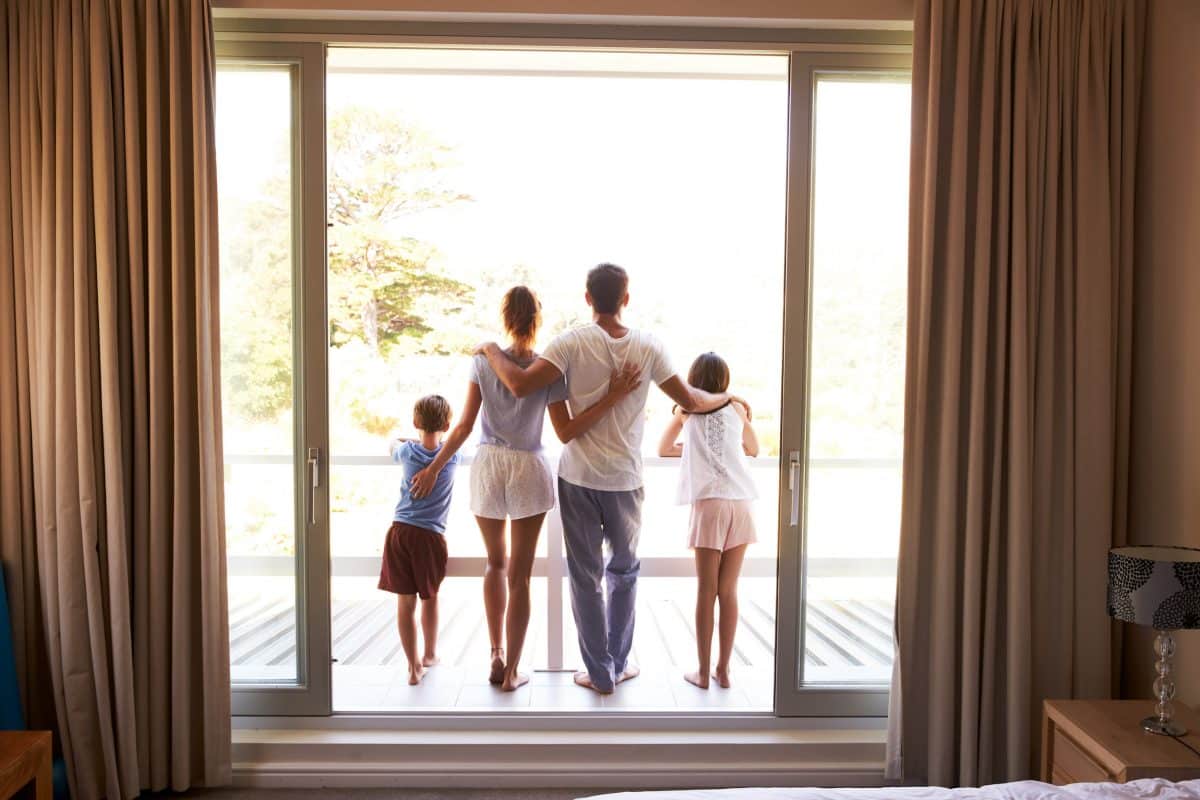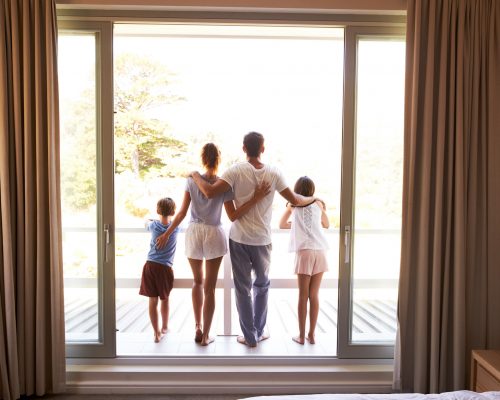
At some point in the future, the SARS-CoV-2 pandemic will end. Even now there are signs of hope as the food lines and testing lines are rivaled by people waiting patiently in a line for a vaccine. The flu pandemic of 1918 lasted for two years and two months, and currently we are entering the second year of the current pandemic. The longer this pandemic continues, the more our society will change, the greater the change and more permanent the change we’ll see. This is nothing more than a social illustration of Darwin’s principle of natural selection. Restaurants, private schools, businesses and churches that have over-extended themselves financially and enjoy only marginal support in their communities will likely shut their doors. If these activities cannot reimagine or restructure themselves to a changing economic and societal environment, they will not flourish. However, those going concerns that can adapt, downsize and so on, will prevail and likely prosper. In this blog installment, I want to explore the changes that are taking place in a number of key areas, including work, health care, restaurants, retailing, education, travel and so on. Before I do, let’s see how typical Americans are faring as the pandemic reaches its first anniversary.
By now, no one is immune to the effects of the pandemic, particularly if they have ignored the admonitions of the Centers for Disease Control and Prevention to wear masks, avoid large gatherings, forego unnecessary travel and distance themselves from others. If these Americans have not followed professional advice from the federal government, then they likely have ignored quarantine orders from their local government as well. They are not alone. Even so, like many of their fellow citizens, they may have faced layoffs, difficulty procuring certain grocery items, increased prices for those goods that are readily available, and their children certainly suffered from shutdown schools, closed swimming pools at parks, canceled athletic events and so on.
So, let’s look at our children for a moment. We all know how we as adults are dealing with this, but what about our children? NBC reports that emergency rooms have seen a twenty-four percent increase in pre-adolescent children with mental health related issues over the past (2019) year. If you focus on “tweens and teens,” the increase year-over-year is almost a third. These children are more likely feeling the indirect effects of stress on their parents in addition to sorting out the new reality as it affects them. If they’ve lost a parent or grandparent to COVID, the reality
“Harder to measure . . . is the impact of missed opportunities. One characteristic of youth is a willingness to reach out and try new things, even when those things provoke anxiety. During normal times, initial worries fade as a new skill is learned or with the recognition that something isn’t as bad as feared. Enforced isolation and curtailed activities are effectively swapping new experiences and challenges for time on the couch and on Zoom.”
Karestan Koenen, “What will the new post-pandemic normal look like?” THE HARVARD GAZETTE
is accented and greater. They are not as resilient as adults, because these may be the first hard times they have ever experienced, and if their parents are nervous and scared, they will most likely be so as well. If they depend on schools not only for education but also for structure, socialization, and nourishing mealsthat they might not otherwise have at home, they will not grow or develop normally and in psychological ways, regress. Says Karestan Koenen, professor of psychiatric epidemiology at the Harvard T.H. Chan School of Public Health. these “times are particularly difficult for those growing into adulthood and finding their place in the world.” She continues “Harder to measure,” Koenen said, “is the impact of missed opportunities. One characteristic of youth is a willingness to reach out and try new things, even when those things provoke anxiety. During normal times, initial worries fade as a new skill is learned or with the recognition that something isn’t as bad as feared. Enforced isolation and curtailed activities are effectively swapping new experiences and challenges for time on the couch and on Zoom.”
As someone who has taught classes for two decades using Zoom and videoconferencing systems before Zoom, I can vouch that it is a useful delivery method dealing with motivated, college-age students. But it is not preferable to face-to-face instruction in my opinion. And it does not work will with children in the younger grades. Then, too, it’s a challenge for teachers. You can’t pass out graded papers to a Zoom class. You can’t assert yourself in subtle ways on screen like you can in a classroom. If you have multiple sites to broadcast to, you have problems when one site drops off. And if you don’t have the minimum amount of software skills or hardware such as adequate computer resources and a webcam, forget it. But enough of that. Let’s begin looking at what is happening to the systems and institutions in our country.
Post-pandemic Work
Work is changing at almost a revolutionary pace. “When the pandemic is over, one in six workers is projected to continue working from home or co-working at least two days a week, according to a recent survey by economists at Harvard Business School. Another survey of hiring managers by the global freelancing platform Upwork found that one-fifth of the workforce could be entirely remote after the pandemic.” The Workforce is about to change dramatically” The Atlantic. Work from home (WFH) has been tried in the past with mixed results, but now the impetus for WFH is not for convenience sake, but rather a matter of public safety. And while you cannot deliver furniture, police the community, or shuttle people from place to place from home, you can work in banking, customer relations, data analysis, education, and dozens, if not hundreds, of other areas without leaving your house.
According to the Atlantic magazine, “Many Americans were already couch laborers before this all started. Prior to the coronavirus outbreak, about 29 percent of college graduates worked from home at least some of the time.” Many others might wish that they had the opportunity to do so, if not on a fulltime basis, then perhaps a few days each week. But there are distractions in a home with children, household business such as phone calls, plumbers and so on. Workers may lack the space for use as an office, or the necessary computer hardware (or software skills.)
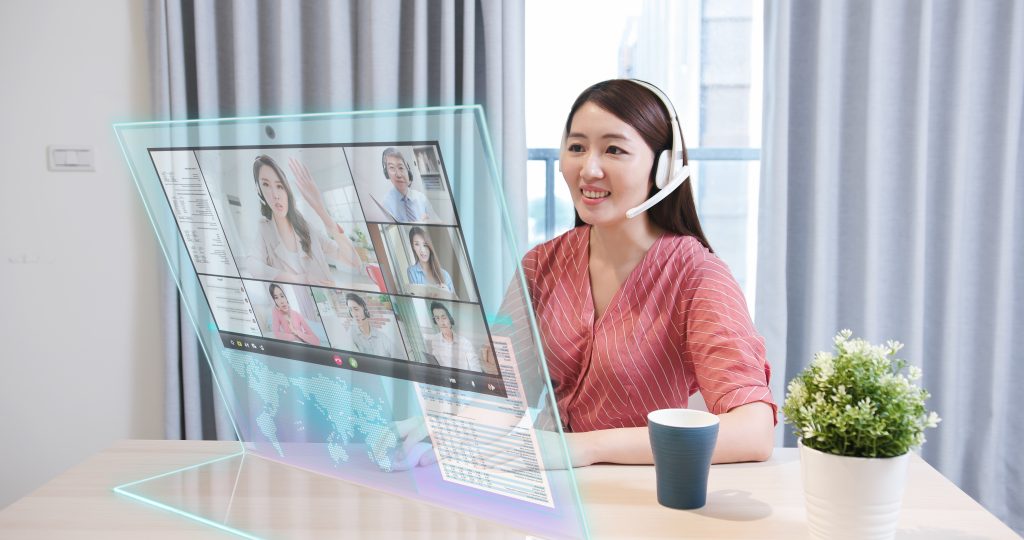
Then, there is the need for a good router, and adequate wi-fi signal. We hear a lot about 5G, but it is only currently available to just over half of the population. There may be a temptation to watch the children while they work and save on day care, but that is not always acceptable. I tried to converse with a tech support representative from my web host a few months ago while she was holding a crying baby. I was entirely sympathetic to her situation, but could not hear what she was saying to me before she abruptly hung up, apparently as frustrated as I was!
However, “In spite of all the distractions at home, having employees work remotely more often might be beneficial for employers and workers alike. Some small experiments have found that combining work and home can actually boost morale in certain circumstances. Washington State allows new mothers who work at state agencies to bring their newborns to work. Rather than distract people, the presence of the babies in the office made workers happier and more productive, according to news reports” as reported in The Atlantic.
WFH requires a certain amount of restructuring, both in terms of facilities and the culture of work. Some people like Erica Brescia, CEO of GitHub are already predicting changes in how workplace offices will be redesigned from here on. She notes that “… companies who do not have a strict need for physical interaction are going to have to operate more like open source communities – distributed, asynchronously and online. We will quickly see a material shift in who succeeds in this new mode of working.”
“Most of us occupy two spaces, a home and a workplace, that we travel back and forth between throughout the work week. As more people switch to working from home, that will leave a hole in the metro labor force. Emptier offices mean fewer weekday lunches at restaurants, fewer happy hours, and fewer window shoppers—not to mention less work.”
David Autor “The Workforce Is About to Change Dramatically.” The Atlantic Monthly Magazine
The greater challenge according to Elisabeth Reynolds, Executive Director, Task Force on the Work of the Future (MIT) is “What happens to the 60% of workers who can’t work from home?” Not only that, when you take half of the commuters today and tell them to work from home, you lose jobs for maintenance and housekeeping personnel as well as food service employees, those that work in transportation and so on. Reynolds and David Autor, also of MIT put it this way as reported in The Atlantic: “Most of us occupy two spaces, a home and a workplace, that we travel back and forth between throughout the work week,” Autor said. He continued: “As more people switch to working from home, that will leave a hole in the metro labor force. Emptier offices mean fewer weekday lunches at restaurants, fewer happy hours, and fewer window shoppers—not to mention less work.”
There is also a political quotient to the prosperous, generally salaried WFH force and the hourly wage service industry which has no virtual alternative (how do you clean an office from home or secure a building after hours without leaving your house?) If the middle class continues to shrink as one person reaches the upper class while ten more fall into poverty, we’ll see democracy in America continue to decline as well. The fundamental requirement to achieving and sustaining democracies is to have a thriving middle class, a standard that is becoming increasingly difficult to maintain (even in the U.S.)
Just as there are benefits to WFH, there are also risks to consider. Are the workers truly productive? Are WFH employees beyond a supervisor’s span of control? Is there sufficient IT security if people from hundreds of locations with different computers, operating systems, disingenuous passwords, outdated anti-viral software, etc., all access the deepest secrets of a company’s computer network? Recall the recent incident in Oldsmar, FL where unidentified hackers captured control of a water treatment facility and attempted to poison the 15,000 residents in the town. It was first noticed by a technician who saw the mouse on his computer screen being silently moved about the screen as if by an invisible hand according to Wired magazine. The cursor on the screen seemed intent on changing the proportions of chemicals in the water supply to dangerous levels. It is not yet clear whether the employees at the plant worked from home routinely, but frequently companies that allow employees to work from home do not provide adequate Internet security protocols for employees; protocols such as firewalls, strict password controls, two-factor authentication and so on. In this case, according to PCMag and an emergency alert issued by the state of Massachusetts to its water supply operators and environmental scientists, passwords were shared among employees, the utility was using a version on Windows software which no longer was being updated with security fixes by Microsoft, and there was no benefit of a firewall to deter hackers.
The transformations in the workforce, and even career choices, themselves, will change to some degree following the pandemic. Richard Alderson, founder of global career-change specialists Careershifters, says “a shock to the system often causes people to reassess things in their lives”. Before the pandemic, some of his clients were people going through major life events such as a bereavement, break-up or an age-related milestone. Now, the ‘jolt of the pandemic’ has caused many more of us to ask fundamental questions about our life choices and whether or not these align with our core values.” There is a deep-routed realignment going on and the minds of many Americans. The longer our lives are disrupted, the more radical the realignment becomes. Meanwhile, an increasing number of offices across metropolitan American will see their lights turned out for good.
Post-pandemic health care
Telemedicine and remote patient monitoring have been around for a number of years, but the pandemic has thrust these innovations from the fringes of medicine to the mainstream of patient care, possibly because of the blessings of private health insurance companies and with the approval of the Food and Drug Administration.
It was only during the pandemic that I first used telemedicine myself, not daring to risk sitting in a waiting room to see my physician while praying that the patient across from me was coughing and sneezing because of allergies and not some potentially deadly virus. TeleMed doesn’t work for every circumstance. Some patients may have to come in to the clinic for lab work. Nor can a doctor evaluate a breast lump over the phone, or check to see the cause of an earache in a small child. But videoconferencing allows for the exchange of vital information between a doctor and her patient, and also allows mental health counselors to meet with their clients as well.
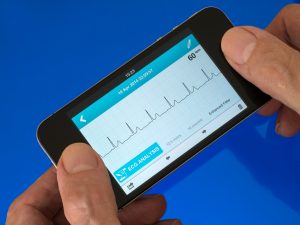
Remote, innovative applications such as KardiaMobile by AliveCor will certainly be a priority for the future in any event. According to its developers, KardiaMobile detects bradycardia, tachycardia, atrial fibrillation, or confirms normal sinus (heart) rhythm at the very least. Fundamentally, it is designed to warn clinicians if a patient’s heart is beating too slowly or too rapidly, thereby answering one of the first questions that comes to a physician’s mind. The value of detecting atrial fibrillation is that atrial fibrillation can be a precursor to life-threatening blood clots. The current software provides a “six-lead” display, providing alerts if the patient is having premature (ectopic) heart beats and also changes to his or her QRS waves, enough to warn physicians that the patient may be having a heart attack. It is available for a monthly subscription rate and the miniature appliance will plug into iphones and android devices as well.
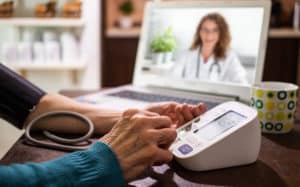
There will likely be a rush of patients contending for hospital beds after the pandemic ends. There are people who have postponed elective surgery or otherwise declined to seek medical care for chronic problems, routine check-ups, and so on.
Having worked and taught in a health care environment myself for a decade, I could relate if only to some small degree to the stress that our frontline doctors and nurses were laboring under. I’ve treated patients with wound and skin precautions, enteric (needle and stool) precautions, respiratory isolation and reverse isolation. These present, pandemic circumstances were likely not in the minds of our point of care workers when they applied to medical or nursing schools. Early in the pandemic when hospitals tried gallantly and vainly to keep up, retired military health care workers (like me) were solicited to volunteer to assist overstressed hospital employees. Given these taxing circumstances, I expected many hospital employees, especially those with young children or those approaching the age of 65 to bail out of health care, because the risk of bringing some pathogen home from work that was potentially deadly was too great. At least, enrollment in nursing and medical schools would drop. However, I was pleasantly surprised (and in some ways, not surprised at all) to learn that the reverse was true. According to Kaiser Health News, ADN (Associate Degree in Nursing) applications were on the rise. BSN (Bachelor of Science in Nursing) programs saw a six percent increase in enrollment last year, while medical school applications rose by three times as much. Even so, with the number of baby boomers increasingly “graying,” health care will remain stretched. Nursing, like education, has always been something of a calling with a rich history stretching back many centuries. And, I think we should give a shout out to everyone else who work in hospitals, from respiratory therapy techs, to patient billing personnel to housekeeping employees for their tireless devotion as well.
Restaurants employ 15.6 million workers and provide four percent of the country’s Gross Domestic Product, according to Food and Wine magazine.
Restaurants and hospitality
According to a recent Bloomberg story, 110,000 U.S. restaurants either went out of business last year or they closed indefinitely. Those that remained open lost an average of thirty-six percent in their income stream. Worse, those surviving restaurants who have not shut their doors note that their revenue has dropped, but the cost of doing business has actually gone up as they grapple with new and expensive regulations. Still worse, even as the Virus has impacted minority communities disproportionately with consequential health complications and death, restaurants owned by minority entrepreneurs were some of the first to go out of business.

One innovation from last year that you probably have encountered already and that will hopefully continue after the pandemic is the use of QR codes in restaurants in lieu of menus. Menus and especially those that are laminated or enclosed in plastic are notoriously famous for harboring microscopic pathogens and macroscopic stains. So are pens and check presenters. Staff learn to clean tables, silverware and so on thoroughly, but what about salt and pepper shakers, ketchup and mustard containers, and menus? Not everyone has a QR reader on their phones, and it’s a bit of an inconvenience to use when you’re not very tech-minded, but then so were ATMs fifty years ago. For those people who are challenged by new software or technology in general, disposable printed menus will likely be available. Expect to see an increasing number of restaurants that prompt you to order and pay on your phone as well. You’ll be escorted to your table and when your order is ready, a waitress or waiter will bring the meal to your table. Drink refill requests will be processed via your phone as well.

The point is to keep the diner from touching potentially germ laden items that he or she do not need to touch, and technology makes this possible in part. As Kristin Hawley writes in Food and Wine: “Technology alone won’t rebuild restaurants in the future, but new and thoughtful technology can make them stronger. As we rethink business models now, trading the old status quo for an unknown future, restaurants will need to make careful decisions about the tech they use—and more importantly, the tech they don’t.” [Pull quote]
Food delivery services are also more popular than ever, though not every county in America has them. Deena and I never used them before last fall, but this year we use either Door Dash or Grubhub at least once every few weeks. Not all restaurants are enamored with these services, because there may be commissions that the restaurant must bear and whch bite into their profit margin. So, likely more restaurants will offer delivery options, themselves to cut out the middle-man. But according to QSR: “There’s little doubt third-party delivery will remain a growing (and consolidating) player for an extended period of time.”
At the end of 2020, USAToday ran an excellent article called Twenty Ways Dinging May Change in 2021. Here are some of the highlights:
- One of the more important changes is that those restaurants that remain will owe a great debt to customer loyalty, and expect them to become more involved in community activities.
- Outdoor dining which was already popular for some, will become even more popular in the future. Expect to see more dining pods.
- More restaurants will offer beer and wine to go with their meals. This will require legislative changes to state liquor laws, but many Americans enjoy a glass of wine or a margarita with a meal, so restaurants will need to accommodate them.
- Restaurants will find ways to increase revenues. It may have started to Red Lobster frozen cheese biscuits in Walmart and Olive Garden salad dressing for sale in supermarkets. But restaurants may be marketing alfredo sauce, bread sticks, and other house favorites from the restaurant, itself. Cooking classes either at the restaurant or online may also become popular.
- Look to see less self-service soda machines like you find at fast food restaurants as well as fewer salad, breakfast bars, and smorgasbords or open, help yourself, buffets.
- The will likely be less overcrowding than in the past as patrons become adjusted to social distancing.
- Look for the introduction of AI (artificial intelligence) in the food service and hospitality industry. You’ve already been exposed to AI if you use Pandora or Spotify. Based on your previous selections, these music apps will make recommendations that the app thinks you’ll enjoy. So, if you’re listening Enya, your recommendations might include Clannard or Celtic Woman. The same is true with Amazon. Buy a book on quilting and there’ll be recommendations on other quilting books. A restaurant can keep track of your pasta choices, whether you are a “surf” or “turf” person, etc. If you order Sea Bass, there might be a wine recommendation for you that some algorithm comes up with.
- Meanwhile, those restaurants that are only marginally profitable, that offer poor customer service, score low on health inspections, and so on will disappear, meaning there will be less choices for you to choose from.
- Finally, the planet-wide trend toward global warming and other environmental issues will make some foods (like tilapia) more available while making other choices (such as Atlantic cod, a victim of overfishing) harder to find.
In Part II we’ll look at changes in Retailing and Education that are on the horizon.
